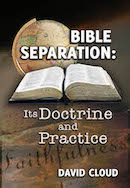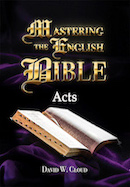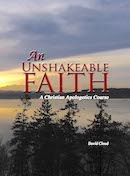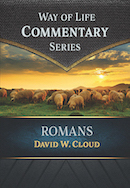866-295-4143, fbns@wayoflife.org
Taize (pronounced teh-zay) is an ecumenical monastic religious community that was formed in southeastern France in 1940 by Roger Schutz, a Swiss Protestant pastor who went by the name of “Brother Roger” and who led the community until his death in 2005. The new leader is “Brother Alois,” a Roman Catholic from Germany.
The community’s goal is to work for world peace and ecumenical unity.
Today the Taize monastic order includes more than 100 allegedly “celibate brothers” from different countries and denominations, including Roman Catholic, Lutheran, Anglican, and Reformed. Some of these live communally in Taize, while others live in various other parts of the world. They practice Catholic and Orthodox forms of contemplative spirituality, such as silence, centering prayer, and meditating on icons.
While the Taize community itself is very small, the Taize philosophy has influenced churches throughout the world, and Taize personnel have been at the forefront of ecumenical adventures. Thousands of people per week make pilgrimage to Taize. These include Christians, Jews, Buddhists, and the unaffiliated.
The Roman Catholic connection is very strong. Schutz participated in the Catholic Vatican Council II, which was held from 1962 to 1965, and Pope John Paul II himself visited Taize in October 1986. Schutz attended the funeral of Pope John Paul II in April 2005 and was given communion by Cardinal Joseph Ratzinger, who became Pope Benedict XVI only a few days later (“What the New Pope and Evangelicals Have in Common,” Assist News Service, April 19, 2005). Schutz’s funeral on August 23, 2005 (his throat was cut by a deranged woman on Aug. 16 during an evening service) was conducted by Roman Catholic Cardinal Walter Kasper. Schutz’s successor, Alois Loeser, is a Roman Catholic priest. Pope Benedict XVI said that he had received a letter from Schutz on the day of his murder in which he “expressed his desire to come to Rome as soon as possible to meet me and to tell me how the whole community of Taize intends to walk alongside the Pope” (The Scotsman, Aug. 17).
Taize is also closely aligned with the extremely liberal World Council of Churches. When George Carey, the Archbishop of Canterbury, brought 1,000 youth to Taize in 1992, “he was struck at how evangelicals, Catholics, and charismatics all felt at home” (Christianity Today, Jan. 8, 2001).
In 1982, Schutz initiated the “worldwide pilgrimage of reconciliation,” annual gatherings which bring together tens of thousands of young people from around the world in radically ecumenical meetings. Taize gatherings in European cities have brought together up to 100,000 people, many of whom have no Christian profession.
Evangelicals are also getting on board the Taize bandwagon. In an article titled “Learning the Ancient Rhythms of Prayer,” Mennonite pastor Arthur Boers describes a trip to Taize (Christianity Today, January 8, 2001). He recommends the ritualistic “set prayers and readings” that are practiced in ecclesiastical communities such as Taize, though he admits that these practices are remnants of medieval Catholicism. He describes the movement toward ritualized, prescribed prayers among evangelicals. “Even my own Mennonite tradition is republishing old prayer books… About two decades ago, on a whim, I bought a discontinued book by a famous Catholic priest. … As it turned out, this book became the starting point in my recovery of a fuller prayer life through the daily office” (p. 40).
At the local level, the eclectic, syncretistic Taize worship style is influencing many congregations. In Vancouver, British Columbia, for example, four United Church of Canada congregations hold regular Taize services which were described in an article in the Vancouver Sun (April 14, 2000). A “shadowy medieval” atmosphere is created with the use of such things as candles, icons, and incense. The goal is to bring the “worshipper” into a meditative state, “to a place beyond words, a place of just being.” That, of course, is also the goal of Hindu and Buddhist meditation. There is a lot of repetition, with “one-line Taize harmonies repeated up to 15 times each.”
The Taize web site promotes the use of icons. “Icons contribute to the beauty of worship. They are like windows open on the realities of the Kingdom of God, making them present in our prayer on earth. Although icons are images, they are not simply illustrations or decorations. They are symbols of the incarnation, a presence which offers to the eyes the spiritual message that the Word addresses to the ears.”
This is very wrong and dangerous. The Bible condemns the making of images as helps to religious experience. It is condemned in the very first commandment. We are to live by faith, and “faith cometh by hearing and hearing by the Word of God” (Rom. 10:17). Faith does not come through icons.
The Taize services are non-dogmatic, non-doctrinal, non-authoritative. There is no preaching. “It does not dictate what people must believe. No confessions of faith are required. No sermons are given. No emotional, evangelical-style testimonials are expected. Clergy are not required.” Schutz described the philosophy of Taize as, “Searching together--not wanting to become spiritual masters who impose; God never imposes. We want to love and listen, we want simplicity” (“Taize,” Religion and Ethics Newsweekly, Sept. 20, 2002).
This is desirable to the unsaved religionist of our day who loves the “non-authoritarian, but mystical, approach to faith.”
All of this is contrary to the Bible. The church belongs to the Lord Jesus Christ. He said, “I will build MY church…” (Matthew 16:18). He has already dictated what the church is to believe and how the church is to be operated. The Apostles were careful to ordain elders in each congregation (Acts 14:23; Titus 1:5). These elders were instructed in the faith once delivered to the saints, and they, in turn, were to teach this same faith to others and to defend it against all heresies (2 Timothy 2:2; Jude 3). It has not been left for the individual to pick and choose his own type of Christianity.
“And the things that thou hast heard of me among many witnesses, the same commit thou to faithful men, who shall be able to teach others also” (2 Timothy 2:2).
“Preach the word; be instant in season, out of season; reprove, rebuke, exhort with all longsuffering and doctrine. For the time will come when they will not endure sound doctrine; but after their own lusts shall they heap to themselves teachers, having itching ears; and they shall turn away their ears from the truth, and shall be turned unto fables” (2 Timothy 4:2-4).
“Beloved, when I gave all diligence to write unto you of the common salvation, it was needful for me to write unto you, and exhort you that ye should earnestly contend for the faith which was once delivered unto the saints” (Jude 3).
- Receive these reports by email
- www.wayoflife.org
______________________
Sharing Policy: Much of our material is available for free, such as the hundreds of articles at the Way of Life web site. Other items we sell to help fund our expensive literature and foreign church planting ministries. Way of Life's content falls into two categories: sharable and non-sharable. Things that we encourage you to share include the audio sermons, O Timothy magazine, FBIS articles, and the free eVideos and free eBooks. You are welcome to make copies of these at your own expense and share them with friends and family. You may also post parts of reports and/or entire reports to websites, blogs, etc as long as you give proper credit (citation). A link to the original report is very much appreciated as the reports are frequently updated and/or expanded. Things we do not want copied and distributed are "Store" items like the Fundamental Baptist Digital Library, print editions of our books, electronic editions of the books that we sell, the videos that we sell, etc. The items have taken years to produce at enormous expense in time and money, and we use the income from sales to help fund the ministry. We trust that your Christian honesty will preserve the integrity of this policy. "For the scripture saith, Thou shalt not muzzle the ox that treadeth out the corn. And, The labourer is worthy of his reward" (1 Timothy 5:18). Questions? support@wayoflife.org
Goal:Distributed by Way of Life Literature Inc., the Fundamental Baptist Information Service is an e-mail posting for Bible-believing Christians. Established in 1974, Way of Life Literature is a fundamental Baptist preaching and publishing ministry based in Bethel Baptist Church, London, Ontario, of which Wilbert Unger is the founding Pastor. Brother Cloud lives in South Asia where he has been a church planting missionary since 1979. Our primary goal with the FBIS is to provide material to assist preachers in the edification and protection of the churches.
Offering: Offerings are welcome if you care to make one. If you have been helped and/or blessed by our material offerings can be mailed or made online with with Visa, Mastercard, Discover, or Paypal. For information see: www.wayoflife.org/about/makeanoffering.html.





